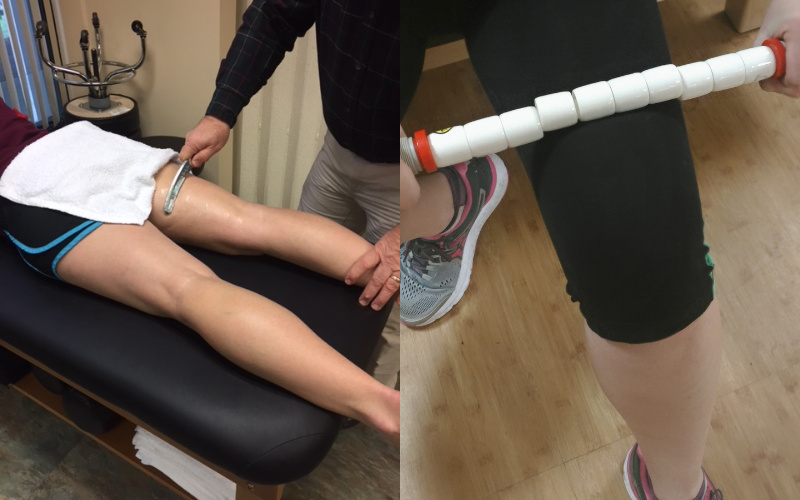Jump! The benefit of massage before physical activity

Sports medicine professionals and exercise science specialists believe that certain warm-up practices before vigorous physical activity can reduce the risk of muscle injuries. Existing research shows that warm-ups increase blood flow circulation to muscles thus making them more flexible and less likely to tear. Manual massage interventions serve the same purpose by increasing blood flow to muscle tissue which can help with elasticity and increasing range of motion. There is a significant amount of evidence that shows the benefits of administering massage therapies prior to exercise in preventing injuries and some studies suggest that certain manual massage techniques may also improve athletic performance. Two widely practiced forms of therapeutic massage interventions are described below.
Self-Myofascial Release
Self-myofascial release (SMR) is a form of self-administered massage where a person applies pressure to their muscles using a hand-held device that can easily roll over the body. One such device is a foam-covered massager known as “The Stick” that is popular among many athletes and coaches. The force exerted by the massager in the SMR technique helps to break up adhesions in the connective tissue, known as fascia, that surrounds muscles. In addition, SMR increases skin temperature, which promotes blood flow, thus leading to better musculoskeletal functioning and increased range of motion.
Instrument-Assisted Soft-Tissue Mobilization
Instrument-assisted soft-tissue mobilization (IASTM) is another form of manual massage that is given by a trained professional using an instrument specifically designed for this type of therapy. A person receiving IASTM is usually in a prone or supine position which allows for a deeper and more intense massage that facilitates a reduction in scar tissue. IASTM produces many of the same musculoskeletal effects as SMR including increased range of motion and improved muscle flexibility. IASTM has also been shown to reduce levels of the stress hormone cortisol thus leaving the person in a more relaxed state.
Manual Massage May Improve Athletic Performance
Manual massage techniques described in this article have been recommended by sports medicine professionals as a way of making muscles less prone to injury during strenuous physical activity and as a tool in helping the recovery phase following exercise. But new research is showing that the use of manual massage interventions could play a role in improving the performance of athletes. A recent study conducted by faculty now with George Mason University’s School of Kinesiology showed that among a group of recreational athletes, those who were randomly assigned to receive SMR manual massage using The Stick before a vertical jump test performed significantly better (as measured by jump height) compared with those who did not receive this intervention.
Based on these findings, the study authors suggested that SMR before exercise could enhance performance due to its ability to increase blood flow to muscle tissue. They recommended that athletes, coaches, and sports medicine professionals incorporate SMR into the warm-up protocol before physical activity.
To learn more about how massage interventions can affect physical performance, read this article by faculty in George Mason University’s School of Kinesiology. Mason’s Kinesiology program offers degree options focusing on the scientific study of human movement and its application in various occupational, recreational, and clinical settings. Please visit our website for more information.
